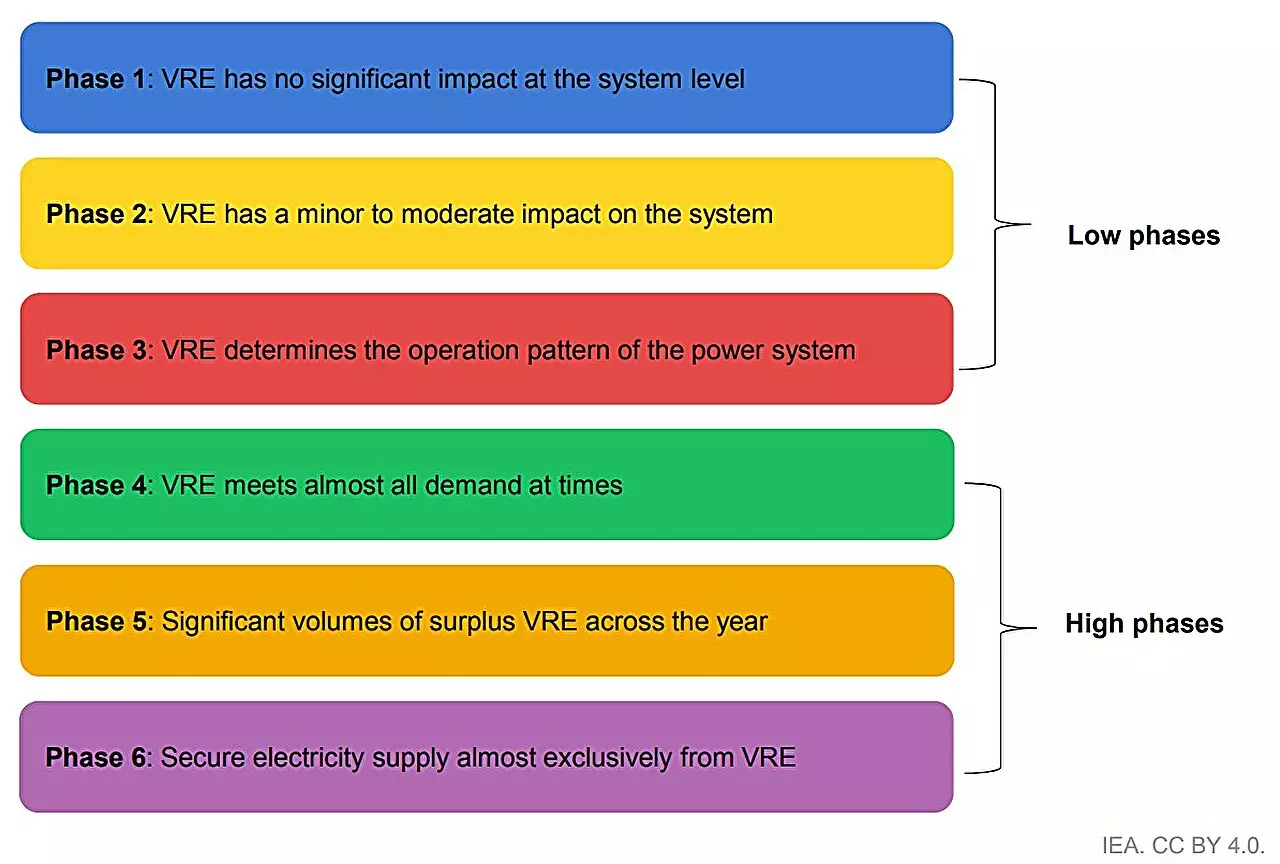The rapid expansion of solar photovoltaic (PV) and wind energy technologies is reshaping the global energy landscape. With the International Energy Agency (IEA) issuing a report highlighting the critical necessity for integrating these renewable sources into existing power systems, it has become evident that without proper incorporation, nations risk undermining the potential benefits of cleaner energy. The acceleration in the adoption of solar and wind technologies—more than doubling their capacity from 2018 to 2023—demonstrates meteoric progress, but it also indicates that policy frameworks must evolve to match the pace of technological advancements.
Historically, the transition toward renewable energy has been marked by both enthusiasm and challenges. As countries strive to enhance energy security and drastically reduce carbon emissions, the commitment to solar and wind energy emerges as a cornerstone of their sustainable strategies. However, the crucial point underscored by the IEA is that the full advantages of these technologies will only be realized if they are successfully integrated into the electricity grids. A failure to act aggressively on integration measures now could impede achieving clean energy goals by reducing projected electricity generation from wind and solar by as much as 15% by 2030.
The effectiveness of integrating variable renewable energy (VRE) sources like solar and wind hinges on a multi-faceted approach. This entails enacting policies that enhance infrastructure flexibility and investment in advanced forecasting technologies. The IEA report posits that regions with lower existing shares of VRE can still significantly increase their deployment with minimal overhaul—factors such as enhancing the flexibility of current power generation assets may be sufficient in these cases. The urgency is not merely in increasing capacity but in ensuring that the energy generated can be reliably delivered and utilized.
Well-documented initiatives adopted by pioneers in renewable integration—nations such as Denmark, Spain, and Ireland—provide a roadmap for success. These countries have developed innovative solutions to managing the effects that heightened penetration of solar and wind energy can have on grid stability. Increasing storage capabilities and advancing power grid technologies have emerged as essential strategies. As these frontrunning systems tackle their challenges, they illuminate pathways for others to circumvent potential pitfalls associated with integrating higher levels of renewable energy.
A crucial point highlighted in the IEA’s findings is that many technological solutions to impending challenges are already maturing and ready for deployment. These solutions, while technologically practical, require supportive policy environments and regulatory frameworks to reach their full potential. Waiting for revolutionary innovations is not the answer; instead, focused strategic development must take priority. Governments must prioritize and expedite the implementation of measures that facilitate the smooth incorporation of VRE resources.
This integration demands a comprehensive rethinking of how energy systems have been historically planned and managed. Traditional paradigms may not suffice as the variability inherent in solar and wind energy outputs poses new challenges for grid operators. Yet, proactive policies and strategic planning across the globe can ensure that countries remain on track to meet their renewable targets. It is vital for policymakers to recognize that the integration of these energy sources is not merely technical; it is a vital step toward achieving sustainability and long-term energy security.
The call to action put forth by the IEA is clear: The integration of solar and wind technologies into electricity systems must be a shared global priority. As nations rally to meet their announced energy and climate goals, the robustness of their strategies—centered on flexibility, storage development, and proactive policy formulation—will largely determine their success. The world stands at a pivotal junction where the choices made today concerning renewable energy integration will not only define the trajectory toward decarbonization but will also afford nations the opportunity to embrace a sustainable energy future. As experience builds, learning from frontrunners will be essential for navigating the complexities of the clean energy transition and ensuring that the remarkable potential of solar and wind energy can be fully realized.


Leave a Reply